MANILA: After conquering Mount Everest, Philippine adventurer Carina Dayondon is set to sail to China aboard a wooden replica of an ancient boat in the hopes of boosting national pride in a forgotten maritime prowess.
Dayondon is planning to sail from Manila to southern China early next year, recreating trade and migration voyages made before Spaniards colonized the Philippines in the 1500s.
“People tell me I am crazy. They ask: ‘Wow, why climb Mount Everest? Why go to China on this tiny thing,’” Dayondon said in Manila Bay aboard one of the two boats that will make the expected six-day sailing journey.
“I’m excited because our team will be more inspired realizing how good our forefathers were. We have to let people know we should be proud of being Filipino,” the 39-year-old added.
Dayondon, a petite but muscular coast guard officer, created history in 2007 when she and two other countrywomen became the first Filipinos to summit the world’s highest mountain.
Arturo Valdez, who led their Everest support team, is also heading the sailing mission and similarly sees the journey to China as a chance to inspire Filipinos.
“Like Mount Everest, I want this to be symbolic of what our people can accomplish, of what can be possible out of the so-called impossible,” the 69-year-old said.
The vessels are a copy of a “balangay,” which date back as far as 320 AD.
“Early trade with China and Southeast Asia was made possible by watercraft,” Ligaya Lacsina, researcher at the National Museum’s maritime division, said.
“Europeans during the colonial period were effusive in their praise of Southeast Asian boat-building skill. But somehow we’ve paid very little attention to this.”
Tribal boat-builders from the southern Philippines, where the boats originated, have made the replicas of the balangay using skills passed on down the generations.
The boats, 18 meters (60 feet) long by three meters (10 feet) wide, are made of hardwood planks, include two sails, two rudders and a roofed area.
Their journey to the southeastern Chinese city of Quanzhou will be about 1,000 kilometers (600 miles), and the crewmembers are aiming to do it with as little modern technical help as possible.
“We have no night-sailing capability so we can be run over by a super tanker. That’s my fear. The greatest difficulty of replicating an ancient voyage is modernity because there are new port protocols,” Valdez said.
“This kind of boat is being treated as a maritime hazard.”
Daily life aboard the boat is a struggle, according to Dayondon.
“We sleep anywhere because we don’t have quarters. We have no toilet. We just hold the rope and use a harness and do the proper position so we don’t fall,” she said.
Nevertheless, a third boat with a motor will accompany the balangays otherwise they will not be allowed into Chinese ports.
Their trip is planned to commemorate a journey made about 600 years ago by a sultan from the southern island of Sulu who went to China to pay tribute to Ming Dynasty rulers there but who but died of an illness on his way home.
The voyage to China will be the team’s second maritime quest following a 17-month journey that began in 2009 around Southeast Asia.
One of the group’s biggest challenges is off the water — finding enough money to fund the adventure.
The team members plan to open the vessels to the public for educational tours and even wedding shoots to raise money for their upkeep in Manila Bay.
Valdez, who also shepherded the first Philippine men up Mount Everest in 2006, said he hoped the government would financially back such feats but they had not.
“Filipinos love us when we climb Mount Everest, love us with our exploits but they are not willing to pay for that. And that makes us a poorer nation,” he said.
“Blazing a trail and going beyond what is normal, that is the spirit of a nation. That is how you build a nation, out of a dream.”
After conquering Everest, Philippine adventurer sets sail for China on an ancient boat
After conquering Everest, Philippine adventurer sets sail for China on an ancient boat

Chill out Riyadh: From Wild West thrills to starlit nights

- These winter destinations reflect the capital’s evolving cultural, recreational landscape
RIYADH: Riyadh, the beating heart of Saudi Arabia, takes on a magical quality as the cooler months arrive, transforming into a playground of vibrant winter destinations.
Whether you are looking for an immersive Wild West experience, serene luxury surrounded by nature, or retro charm under the stars, the capital offers a diverse tapestry of escapes.
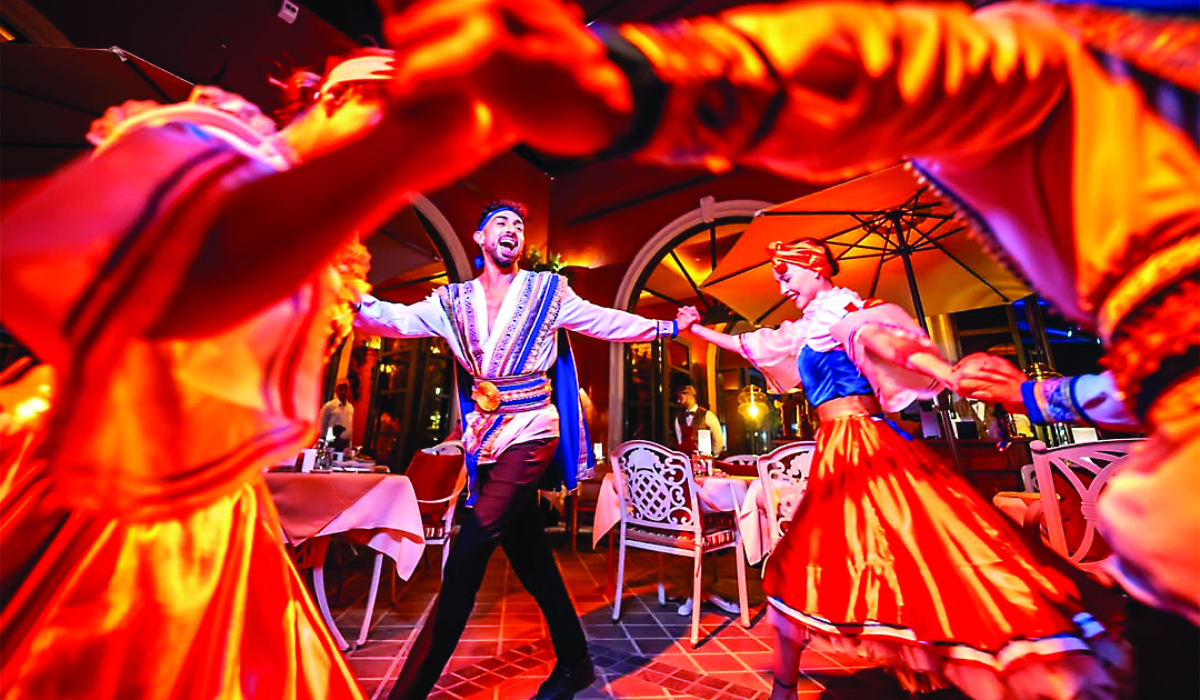
Locals and tourists alike are drawn to Southwest Village, The Groves, Dakkah Winter, and the retro-styled Ammariyah Motel, each providing a distinct blend of entertainment, relaxation, and culture.
On the outskirts of Riyadh lies Southwest Village, a meticulously designed attraction that brings the American Wild West to life. Wooden storefronts reminiscent of 19th-century frontier towns line the streets, while horse-drawn carriages and cowboy-clad performers transport visitors back in time.
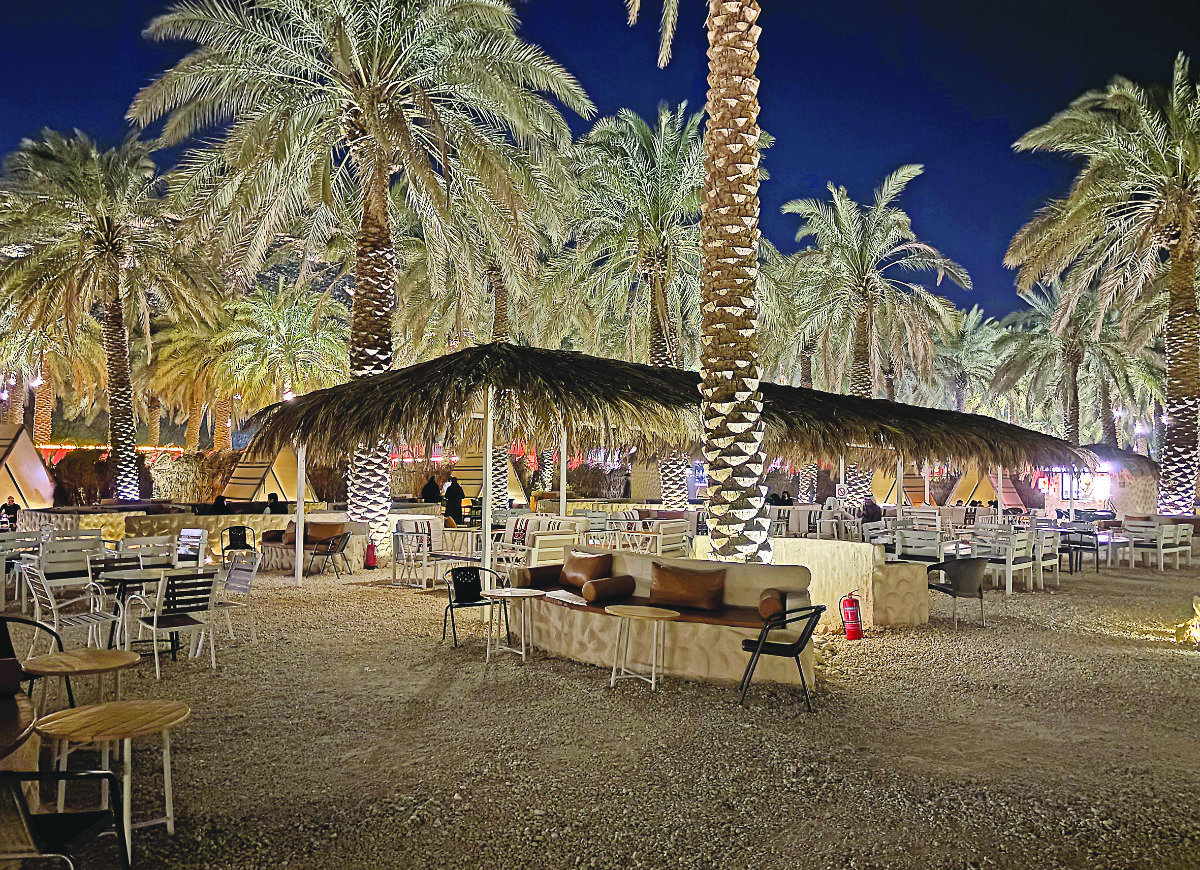
From families with children to history buffs, the village has something for everyone. The centerpiece of the village is its 6D Cowboy Theater, where interactive shows captivate audiences of all ages.
Guests find themselves immersed in the drama and adventure of the Wild West, with state-of-the-art effects that bring every scene to life. “It’s like being part of a movie,” says Salem Al-Qahtani, a frequent visitor. “The energy, the performances, and the attention to detail are outstanding.”
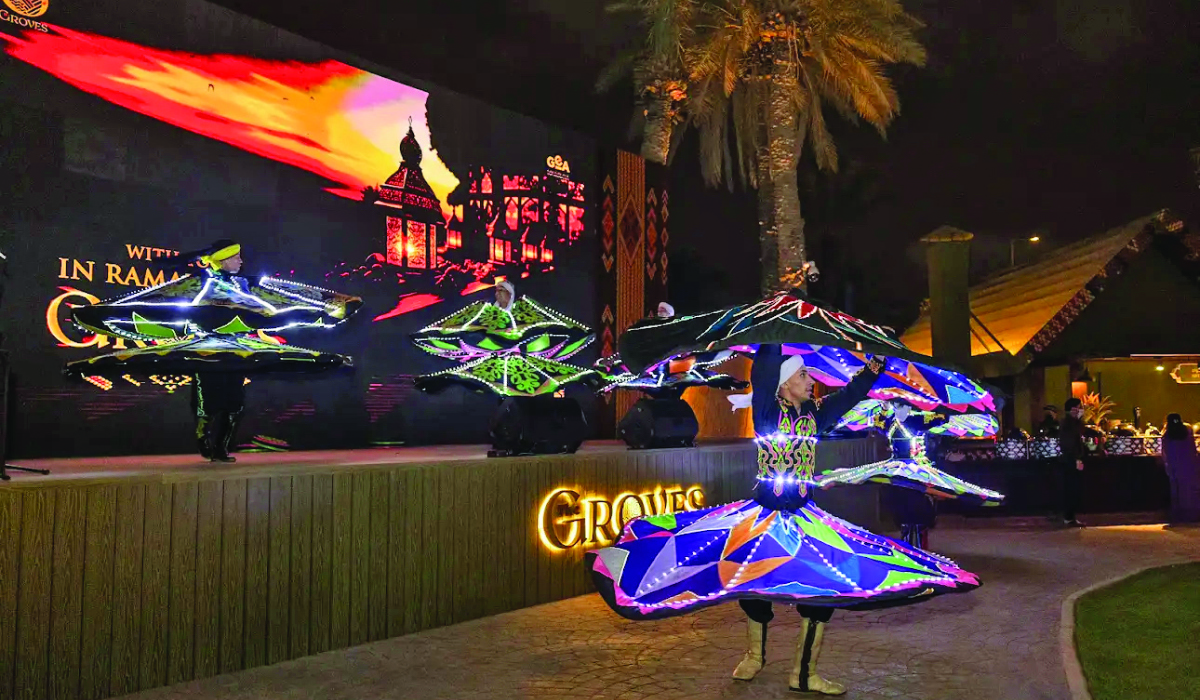
By night, the village comes alive with the glow of warm lights illuminating its bustling Route 66-inspired street. Visitors can explore food stalls serving hearty barbecue dishes, shop for souvenirs in rustic boutiques, or simply take in the atmosphere.
Children can run through haystack play areas while their parents enjoy an evening of live performances and cowboy-themed music.
It’s like being part of a movie. The energy, the performan- ces, and the attention to detail are outstanding.
Salem Al-Qahtani, Southwest Village visitor
For those seeking a more sophisticated escape, The Groves in Al-Rafiah offers a tranquil yet luxurious retreat. Nestled among lush greenery and centered around the serene Groves Lake, this destination combines fine dining, boutique shopping, and carefully curated entertainment to create a memorable experience.
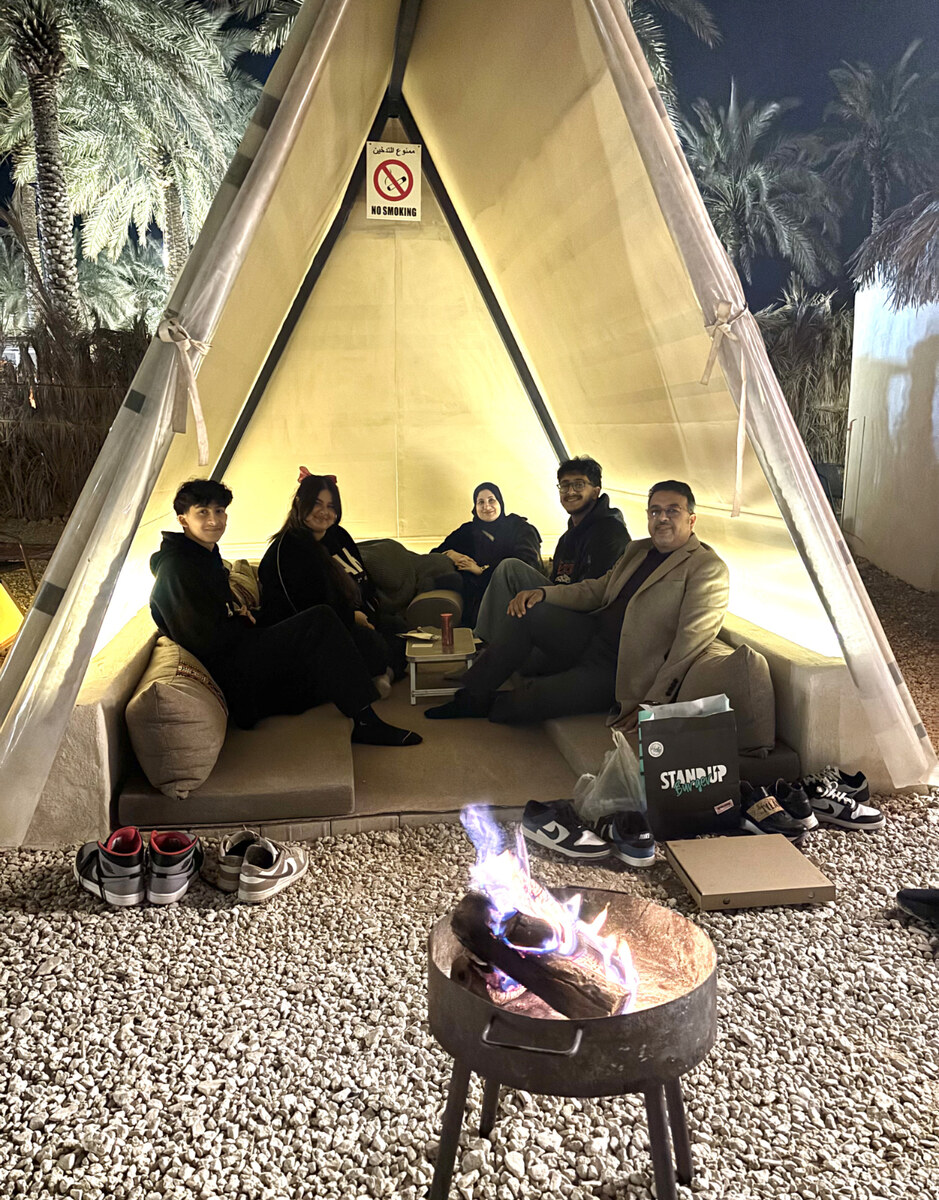
At the heart of The Groves is its iconic bridge, leading visitors to a 360-degree stage that regularly hosts live performances. The soft glow of lights reflected on the lake adds a touch of romance, making it a favorite among couples and families alike.
“We came for the performances, but it’s the atmosphere that keeps us here,” said Rania Banaser, who visited with her family. “Every corner feels like it’s been designed for relaxation and beauty.”
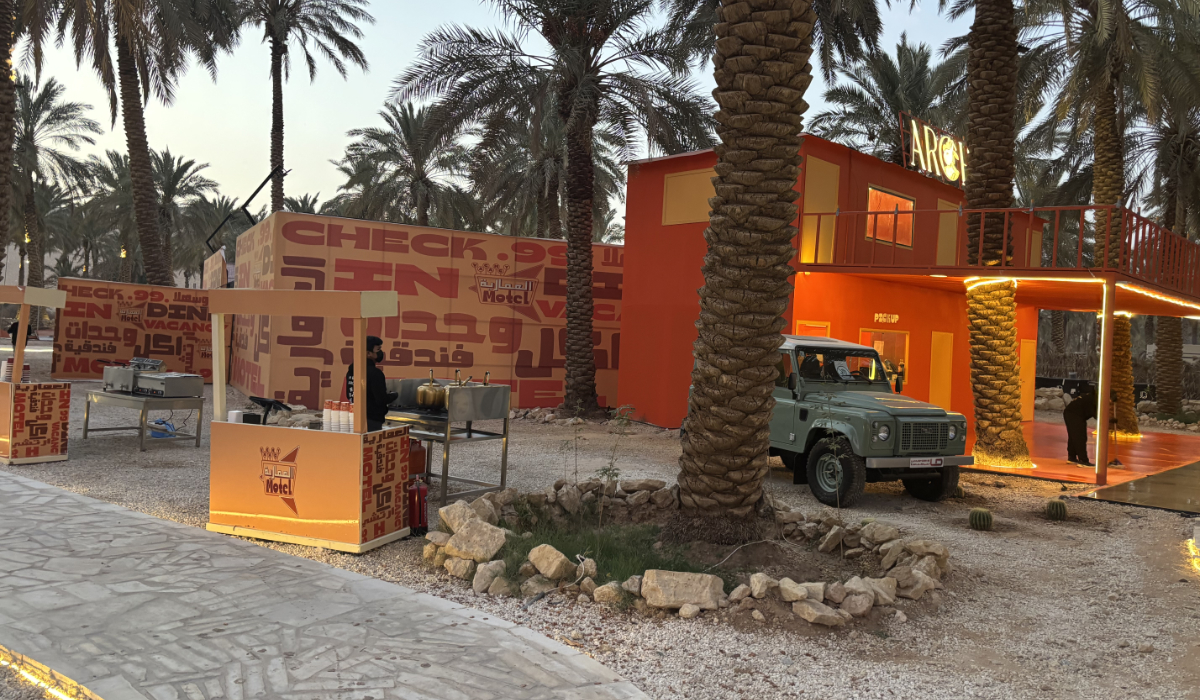
Culinary offerings at The Groves are varied: from Vida Vera’s fusion of Italian and Japanese flavors to Hawanem’s Middle Eastern-inspired dishes, every meal is an experience in itself.
For pet owners, the Luca Park dog area provides a safe space for the animals to play. “It’s rare to find a place that caters to everyone, including pets,” said Banaser.
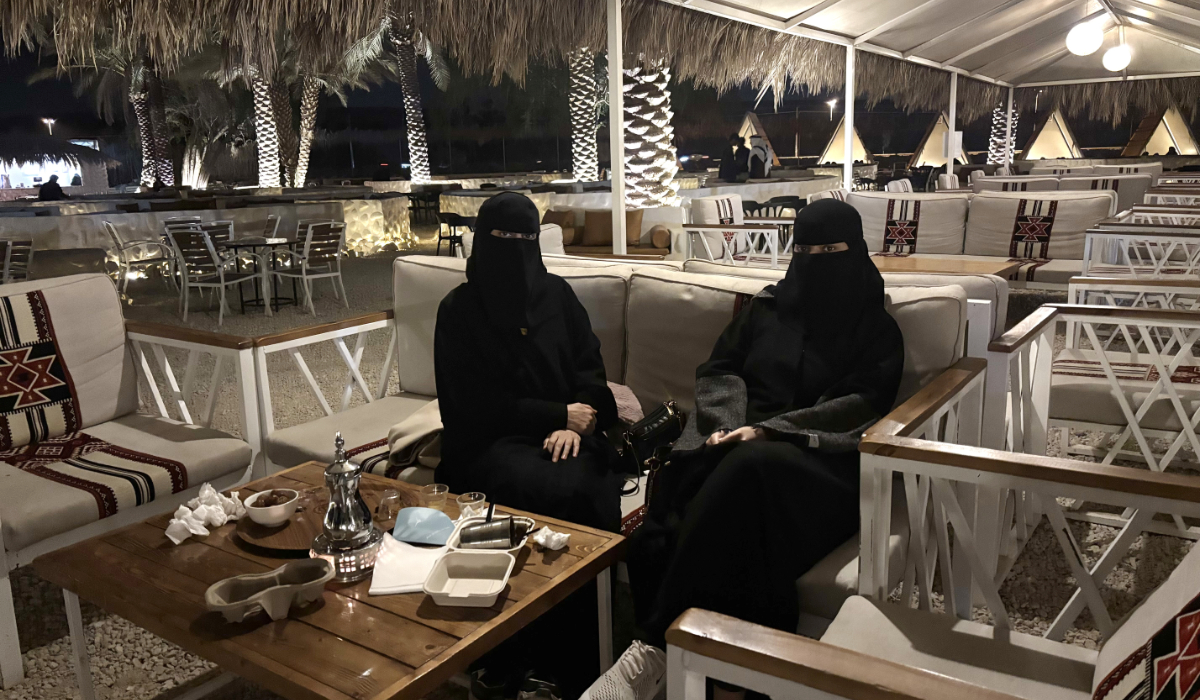
Dakkah Winter has quickly become a favorite among families looking for a relaxing yet engaging destination. With its softly lit palm trees, boutique shops, and cozy food stalls, the atmosphere is warm and welcoming.
One of the most praised aspects of Dakkah Winter is the thoughtfully designed seating arrangements. Guests can choose between open-air settings under the starry skies or private tents surrounded by the warmth of fire pits, making it a perfect spot for intimate gatherings.
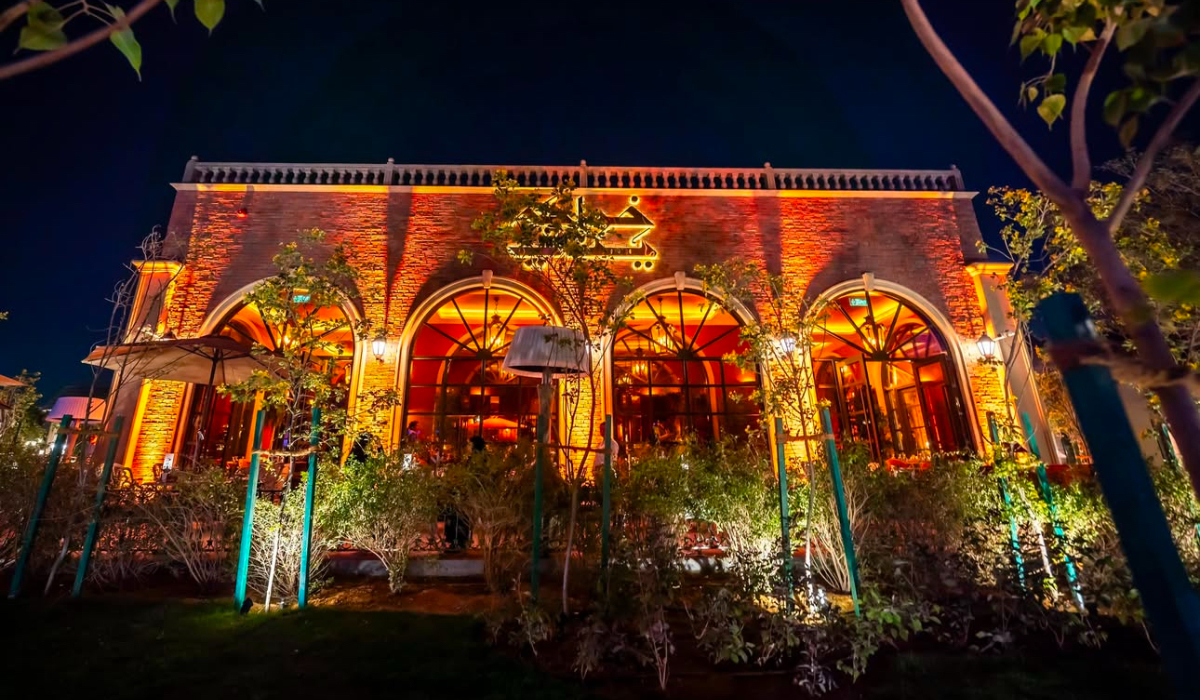
Families often gather around the crackling firewood, enjoying the serene environment and the crisp winter air.
“I think this place is really nice. I don’t think I’ve ever seen a place like this,” said Malak Hassan. “The price range is really good because it's not a typical spot where you can hang out. You can come with family and friends and it’s such an enjoyable place.”
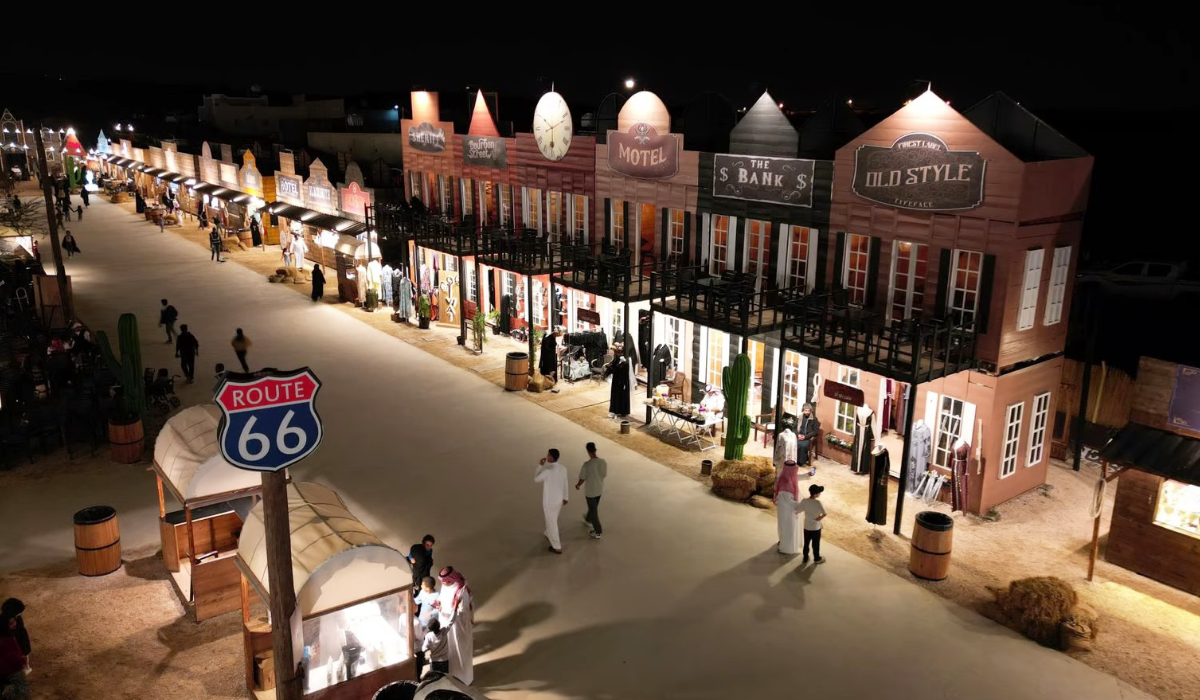
Parents can unwind over a cup of steaming Arabic coffee while children enjoy the supervised play area, designed to keep them entertained for hours.
Sabah Al-Qahtani, one of the visitors, said: “I was surprised by the location. I liked the entrance and the sitting area and everything is amazing and I will definitely come again.”
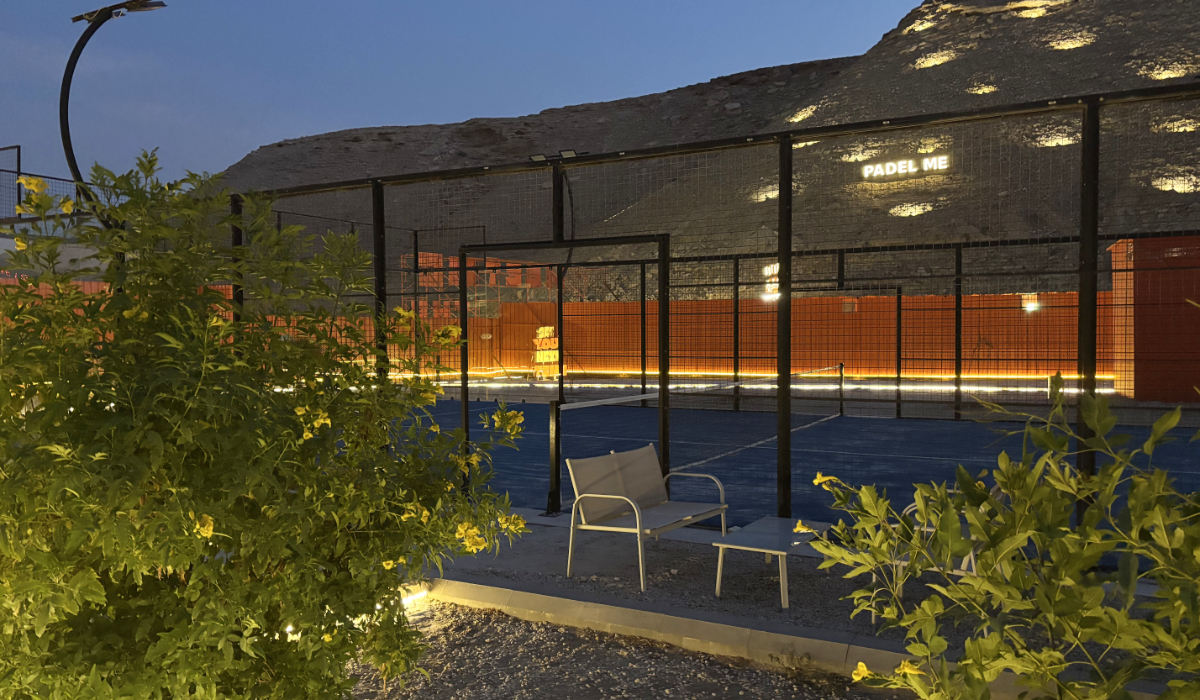
For a dose of nostalgia mixed with adventure, Ammariyah Motel is the place to go. With its vibrant orange and red hues and 1950s-inspired decor, the motel offers visitors an engaging escape from the ordinary.
Upon arrival, guests are greeted by retro signage and colorful seating areas, setting the stage for an evening of fun. The activities at Ammariyah Motel cater to both the adventurous and the more relaxed.
Guests can test their skills at paddle tennis, or simply sit back under the stars. Dining is a highlight, with the pizza bar serving freshly baked pizzas and the outdoor grill offering gourmet burgers that draw praise from visitors.
From the immersive Wild West charm of Southwest Village to the upscale elegance of The Groves, the cozy retreat of Dakkah Winter, and the retro-inspired fun at Ammariyah Motel, a unique experience that captures the spirit of the season is offered to those visiting.
Saudi nature reserve unveils winter retreat near historic Laynah village

- Laynah Camp, designed for nature lovers and desert enthusiasts, is located adjacent to the Al-Dahna Desert
- The initiative is part of the Darb Zubaydah Winter festival, which aims to promote sustainable ecotourism
RAFHA: A winter season retreat close to the historic Laynah village in the Northern Borders Region is now open to holidaymakers.
Designed for nature lovers and desert enthusiasts, the wilderness retreat, Laynah Camp, was unveiled this week by the Imam Turki Bin Abdullah Royal Nature Reserve Development Authority as part of the Darb Zubaydah Winter festival, which aims to promote sustainable ecotourism and preserve the region’s cultural and historical heritage.
Laynah Camp “offers a serene atmosphere where wildlife beauty blends with the desert’s charm, providing visitors with inspiring and adventurous moments,” a Saudi Press Agency report said.

Set against the backdrop of the Al-Dahna Desert, the fully equipped tent accommodation provides breathtaking views of the natural surroundings. To add to the experience, activities such as exploratory trips and upscale camping are on offer, the report added.
Laynah village itself has its own attractions, particularly its ancient water wells, which makes it one of the most important historical sites in the Kingdom.
In a previous SPA report, researcher and heritage and antiquities expert Abdulrahman bin Mohammed Al-Tuwaijri was quoted as saying Laynah village was known to be one of the oldest settlements in the Arabian Peninsula.
“Located on the ancient trade route between Najd and Iraq, it has throughout history provided traveling caravan convoys with respite from harsh desert conditions,” the report said.
Saudi adventurer triumphant after crossing the Empty Quarter

- Badr Al-Shaibani wants to champion Saudi Arabia as a land where heritage, nature and adventure meet
JEDDAH: Badr Al-Shaibani, a Saudi Arabia adventurer and entrepreneur, has successfully completed a 600 km solo crossing of the largest sand desert in the world.
Al-Shaibani departed from Umm Hadid on Dec. 15, the site of a famous meteorite impact, where he set up his first camp. He walked for over 14 days and completed the journey on Dec. 29 at the breathtaking Umm Al-Hayesh Lake — one of the Empty Quarter’s natural wonders.
Speaking to Arab News after completing his adventure, 45-year-old Al-Shaibani said: “Crossing the Empty Quarter on foot is one of the most thrilling adventures I have ever done. It is a really special experience.

“I am so proud to be the first Saudi to traverse such a vast distance on foot, and I hope this journey inspires young Saudis to explore the nature of our country and spotlight Saudi Arabia’s diverse potential as a truly unique global tourist destination.”
His journey began by heading toward Tawil Al-Khatam, a challenging 200 km stretch that he traversed in five days at an average pace of 40 km per day.
Later on, Al-Shaibani continued toward Umm Al-Qurun, covering 90 km, before completing another 45 km to Bayd Al-Laha.
Being alone in the darkness, you explore something you wouldn’t normally see during your life. It was an amazing scene which makes you wonder how Allah created this part of the world.
Badr Al-Shaibani, Saudi adventurer
The third and final leg led him to the Al-Qa’d region near the Sabkha salt flats through a 60 km route. His expedition concluded at the breathtaking Umm Al-Hayesh Lake after trekking an additional 160 km.
From battling the weather to navigating endless dunes, this adventure pushed Al-Shaibani to the limit both physically and mentally. “I discovered the beauty and harshness of the Empty Quarter’s untamed wilderness, where there is a constant challenge, but the rewards are incredible.”
Speaking of challenges he faced, he said: “The first two days, I faced strong storms and winds called savi, and after a while the sun was also strong. Other than that, I am used to walking on ice or climbing mountains, but walking and climbing the soft sand was a big challenge for me. I really faced difficulty climbing the sand because it takes a lot of effort.”
Being so far from civilization exposed him to new experiences. “During the day I could see with my eyes. During the night, the exploration changes,” he said.
“Being alone in the darkness, you explore something you wouldn’t normally see during your life, it was an amazing scene which makes you wonder how Allah created this part of the world.”
He was happy to complete the adventure not only to add it to his achievements but also to document and capture the majestic beauty of the largest continuous sand desert in the world.
“The Empty Quarter, with its distinctive natural heritage and captivating beauty, stands as one of the Kingdom’s most remarkable yet largely undiscovered treasures,” he said.
“This destination has the potential to become a major attraction for tourists from home and abroad, especially with initiatives that promote desert tourism and encourage the exploration of the Kingdom’s unique natural environment.”
Al-Shaibani told Arab News he wants to inspire young people and champion Saudi Arabia as a land where heritage, nature and adventure converge.
Review: A visit to AlUla’s ancient kingdom ‘Wadi Al-Naam’

- Exploration was organized in groups of three riding in desert buggies to reach the hiking location
The Quest for the Ancient Kingdoms is a thrilling treasure hunt and adventure experience in AlUla’s Wadi Al-Naam, also known as the Valley of the Ostriches.
Before the journey begins, participants are provided with helmets, gloves, and hiking sticks, and are treated to a short lesson about the valley by the tour guide.
During our visit, the guide did a wonderful job making the group feel comfortable and translating the lesson from Arabic to English.
Exploration was organized in groups of three riding in desert buggies to reach the hiking location.
The buggy ride is a great chance to enjoy the iconic orange-hued rocks and mountains of AlUla.
At the first stop, participants can get a closer look at the fine details of inscriptions that tell the story of the Dadanites, the ancient residents of AlUla.
The 500-meter-long hike features various obstacles, like climbing up walls and steep steps, while offering breathtaking views of the unforgettable AlUla terrain.
Participants can choose between the Challenge Edition for adult adventurers or the Family Explorers version for a lighter experience. The treasure hunts are ideal for family or friend groups who want to get active during their trip to AlUla.
The quest concludes with a certificate of completion, refreshments, and a chance to interact with camels.
The best part of the experience is connecting with new individuals and putting your heads together to problem-solve as a team to win the quest.
Before going on this journey, please ensure you apply sunscreen, wear comfortable shoes, and stay hydrated as it will involve physical strength and energy to enjoy.
The Wadi Al-Naam Discovery tour costs SR200 ($53) per person and will be open until Feb. 27.
For more details, visit experiencealula.com.
UK, Omani princes launch journey across historic Arabian route

- Camel trek first taken by British diplomat Bertram Thomas in 1928 to be retrodden by team of six travellers
- Prince of Wales, crown prince of Oman sponsoring historic coastal journey
LONDON: A group of explorers, backed by royalty, is set to undertake a historic journey, retracing a route across the coast of Oman first trodden by a British diplomat almost a century ago.
The Jewel of Arabia expedition, supported by William, Prince of Wales and Omani Crown Prince Theyazin bin Haitham, will feature six travelers, led by Mark Evans, following in the footsteps of Bertram Thomas, who first made the journey over 42 days in 1928.
Thomas made the trek to document the area and local wildlife, and was congratulated on his achievement by King George V.
The new journey, featuring camels but also modern off-road vehicles, will “raise awareness among young people both in and outside of Oman of the value of Oman’s natural heritage and biodiversity as well as the environmental challenges the country and the wider world face,” The Telegraph reported.
It will also feature podcasts and radio interviews with local stations along the way, meetings with local children and an online tracker so people can view its progress in real time.
Prince William told the modern explorers at the Royal Geographical Society on Monday: “I wish I was able to join you, but will be following very closely.”
He added: “The expedition will walk in the footsteps of British explorer Bertram Thomas and take in the wonderful coastline of Oman.
“They will be able to take in the beauty of Oman, and also see the damage done by climate change.”
Prince William added: “The expedition will not only highlight Oman’s biodiversity and natural heritage, but also symbolize the enduring friendship between our two countries.”
The prince added to guests at the Royal Geographic Society that he would “try and make something happen” regarding a future visit to Oman, teasing: “We’re in the planning process.”
The trek will see daily starts around 5 a.m. local time, and will aim to cross 25-30 kilometers per day. The travelers will sleep under the night sky, surviving in the desert without tents.
Evans, 63, said: “The stars of the show will undoubtedly be the camels.”
He joked that the animals are now in a “camel boot camp” in Oman to prepare for the arduous trek.
Alongside Evans will be Nigel Harling, Ana-Maria Pavalache, Dhirka Al-Mawali, Ibrahim Al-Hasni and Amour Al-Wahibi, all of whom are experienced explorers.
Thomas’ original expedition came at a time when the region was considered one of the world’s most inhospitable, known as Rub Al-Khali, or the “empty quarter.”
He worked for the sultan of Oman, and became the first Westerner to make the journey along the coast, spending much of his spare time exploring the country, navigating harsh terrain and warring local tribes.
Upon completion, he received a congratulatory telegram from George V, and used the experience as the basis for a book, “Arabia Felix,” which contains a foreword by T.E. Lawrence.
Meanwhile, 2025 will also mark 225 years since the signing of a friendship treaty between Britain and Oman.






















